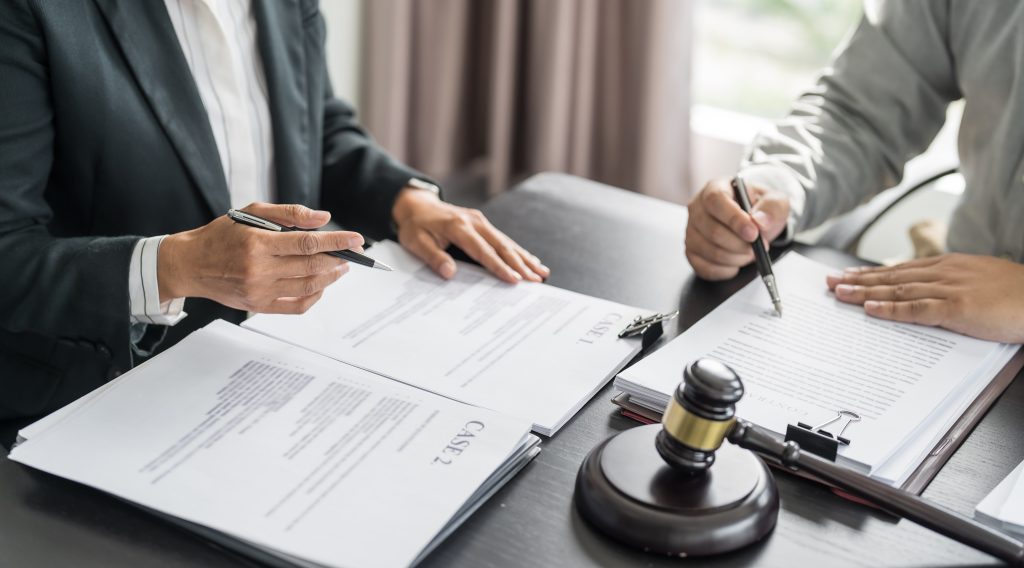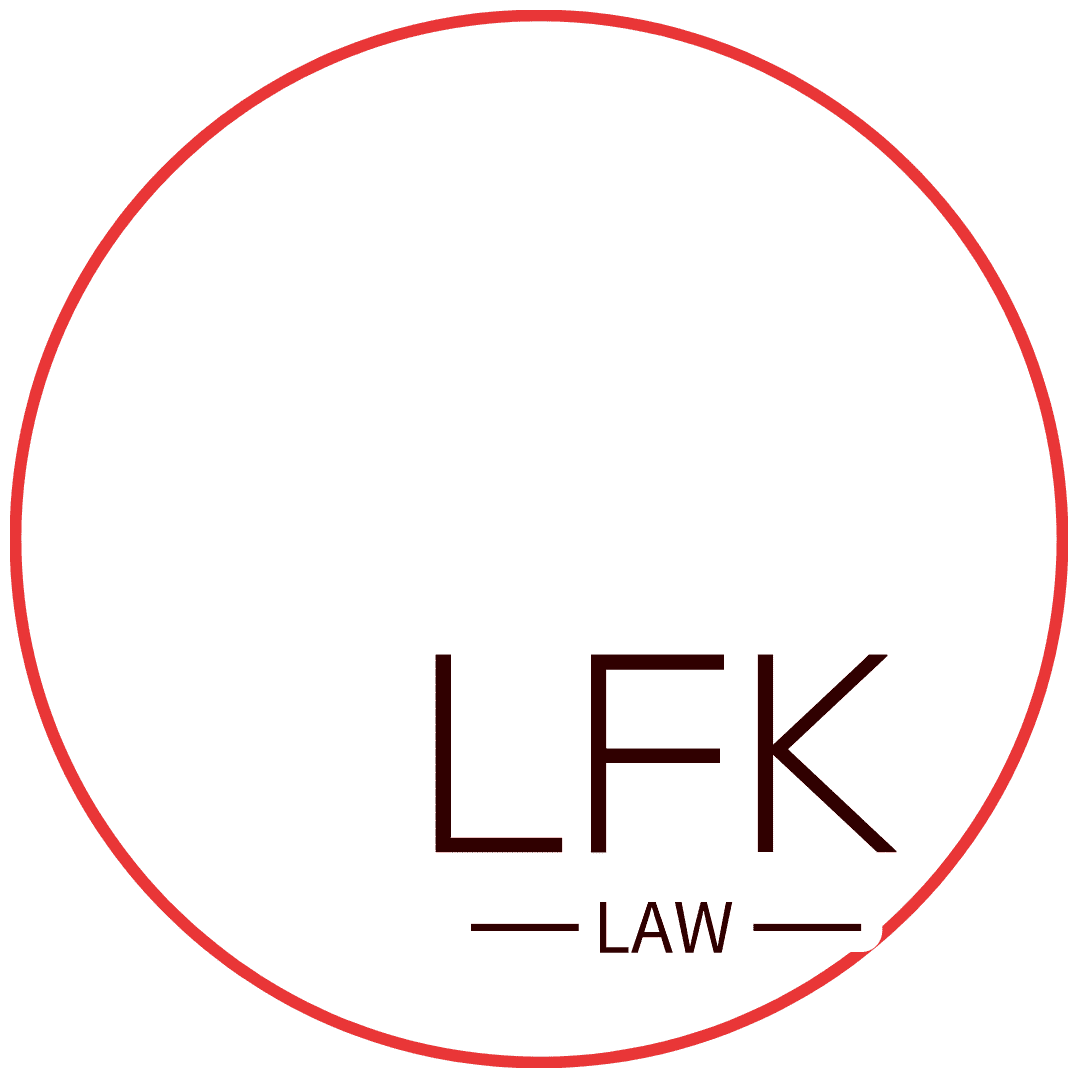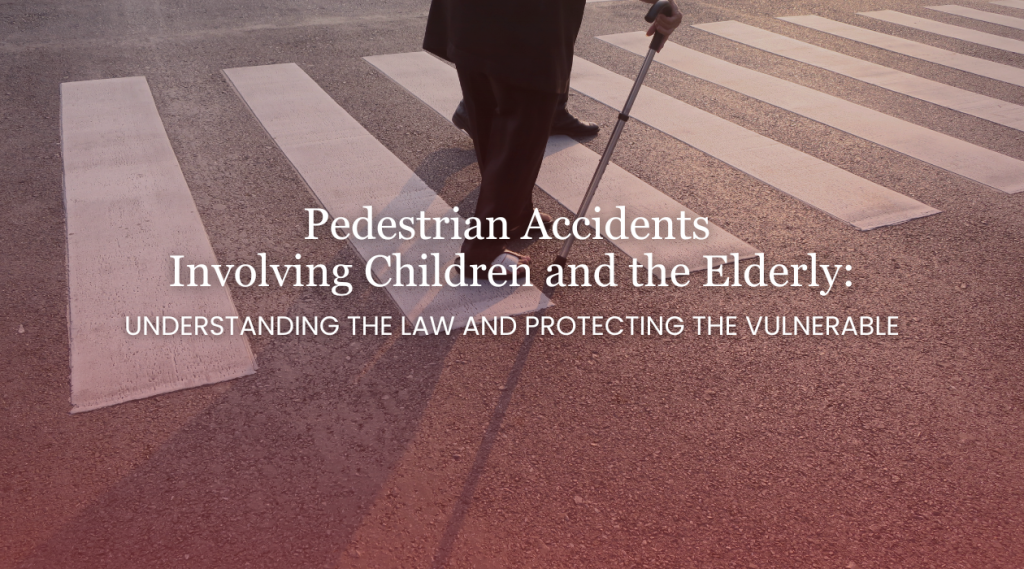
Pedestrian Accidents Involving Children and the Elderly: Understanding the Law and Protecting the Vulnerable
October 29, 2025
Pedestrian accidents are devastating under any circumstances — but when they involve children or senior citizens, the consequences are often far more serious.
In New York, both groups face unique risks on the road, and the law recognizes that drivers have a heightened duty of care toward these most vulnerable pedestrians.
School Zone Accidents: Protecting Children on the Move
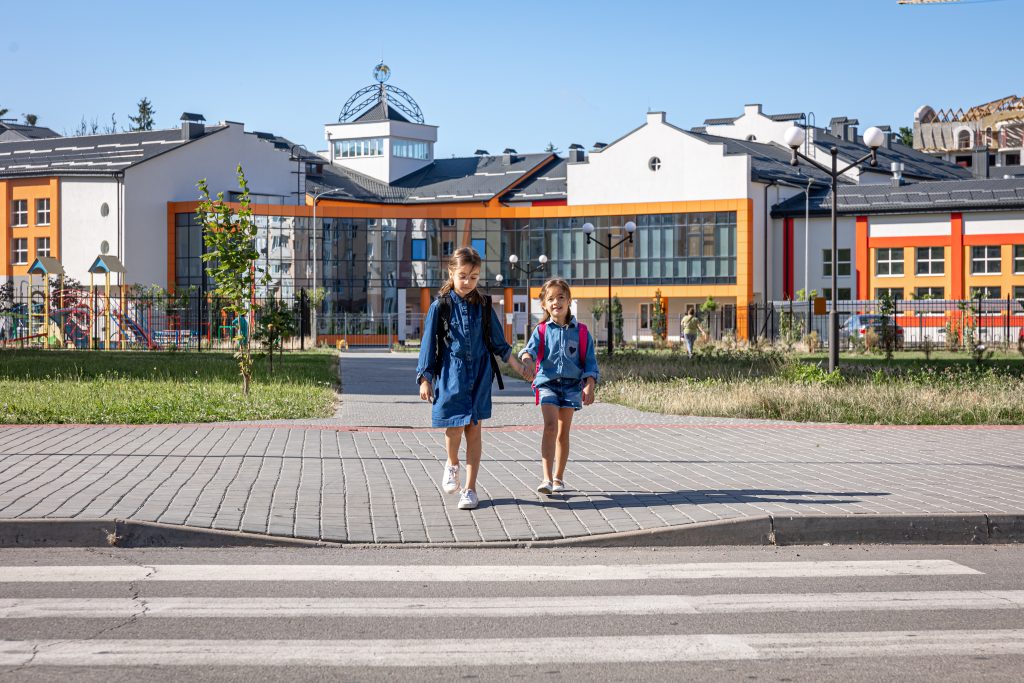
School zones are meant to be safe spaces for students walking to and from class.
However, distracted or speeding drivers often ignore reduced speed limits, crosswalk markings, and flashing warning lights — leading to tragic results.
Under New York Vehicle and Traffic Law § 1180(f), drivers must reduce speed in school zones and use extreme caution when children are present.
Failing to do so can result in both criminal penalties and civil liability if a child is injured.
Common causes of school zone accidents include:
- Speeding through crosswalks or near buses
- Distracted driving (texting or using a phone)
- Failing to yield to crossing guards or children at intersections
Drivers are expected to anticipate unpredictable behavior — like a child suddenly crossing the street — and act accordingly.
Enhanced Duty of Care Under New York Law
In pedestrian cases, New York law imposes what’s called an enhanced duty of care when a driver should reasonably expect children or elderly pedestrians to be nearby.
This means drivers must take extra precautions, such as slowing down, scanning crosswalks carefully, and stopping well before intersections.
Courts have consistently held that motorists must be prepared for the possibility that a child may act impulsively or that a senior may move more slowly.
Failing to adjust one’s driving behavior in these settings can be seen as negligence under New York negligence law (see PJI 2:77 – Duty of Care of Driver Toward Pedestrian).
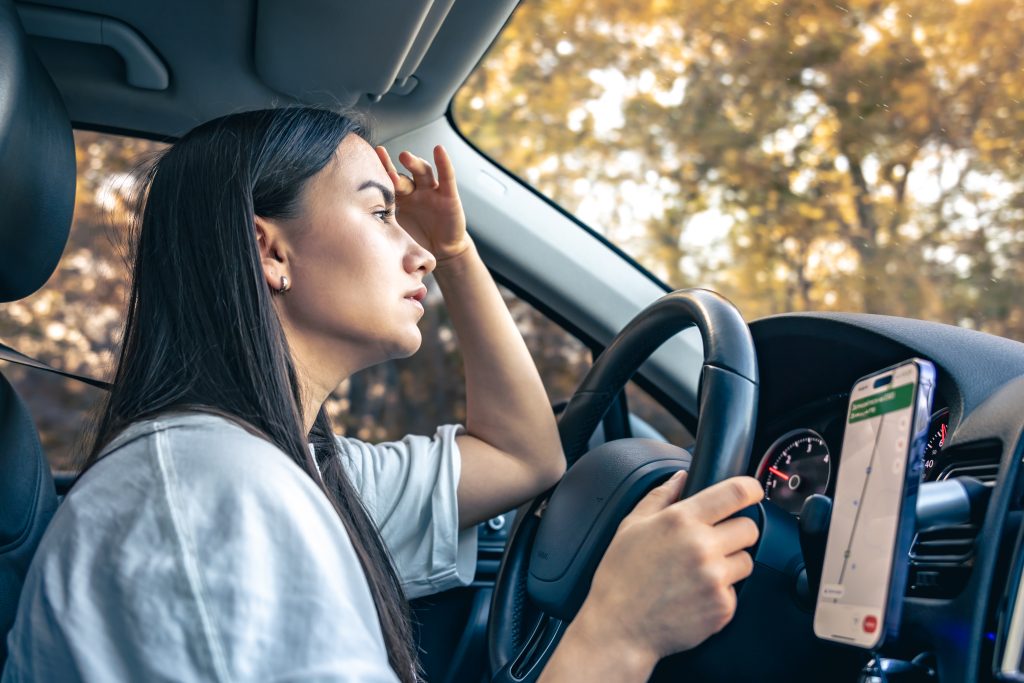
Senior Citizen Vulnerability and Crosswalk Timing Issues
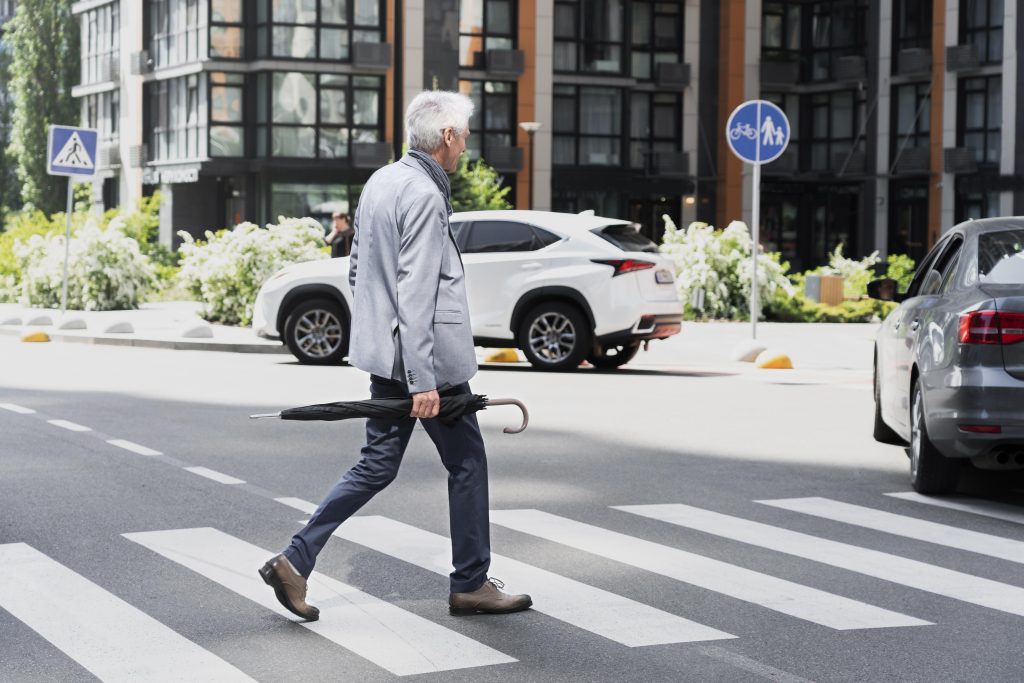
Elderly pedestrians face unique risks due to slower reaction times, vision or hearing loss, and difficulty judging vehicle speed.
Crosswalk timing also plays a major role — many traffic signals are designed with younger, faster pedestrians in mind.
According to NYC DOT data, older adults account for nearly 45% of pedestrian fatalities in New York City each year.
Common contributing factors include:
- Insufficient crossing time at intersections
- Poor visibility or unclear signage
- Drivers turning without yielding
- Lack of curb ramps or uneven pavement
Under the Americans with Disabilities Act (ADA) and New York City’s Vision Zero policy, municipalities have a duty to ensure that crosswalks and intersections are safely accessible for all pedestrians, including seniors.
Legal Options for Injured Pedestrians and Their Families
If a child or senior citizen is struck by a vehicle, the at-fault driver can be held responsible for:
- Medical bills and rehabilitation costs
- Long-term care or disability accommodations
- Pain and suffering
- Emotional trauma and loss of independence
In cases involving school zones or city negligence (like faulty signals or poor signage), additional claims may be made against the municipality or school district — but these require quick legal action due to short notice deadlines under New York’s General Municipal Law § 50-e.

Because each case is unique, having a lawyer experienced in New York pedestrian accident law is crucial for investigating fault, preserving evidence, and dealing with insurance companies that may try to shift blame.
We're Here to Help
At LFK Law Practice, P.C., we understand how overwhelming these accidents can be for families and caregivers.
Whether your loved one is a child injured in a school zone or a senior struck in a crosswalk, we can help you seek justice and recovery.
Our team works with trusted medical providers and rehabilitation specialists to ensure you get the support you need — from medical care to legal guidance.
Contact us today for a free consultation
We’ll review your case, explain your legal options, and connect you with resources to help your family heal and move forward.
